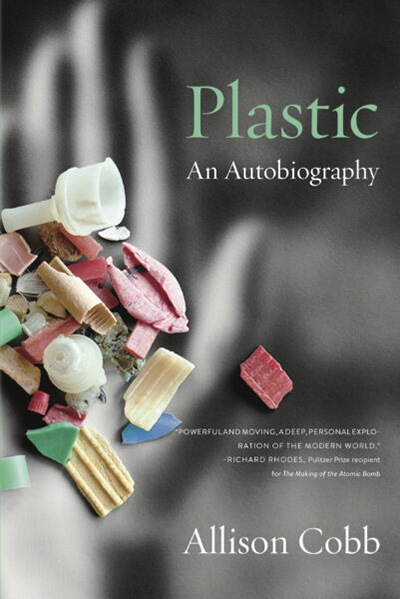Allison Cobb’s PLASTIC: An Autobiography
Nightboat Books, April 2021, 352 pages, paperback $17.95, Amazon Kindle $10.99)
Early on in Plastic: An Autobiography, Allison Cobb recalls her fascination with a plastic-strewn Hawaiian beach. She and three others have arrived at Kamilo Beach–a site long overrun by debris from the Great Pacific Garbage Patch–after an arduous journey over miles of treacherous rock. As they approach the remote shore, brilliantly colored plastic pieces of every conceivable size and shape greet them. Cobb is well aware of the damage being done to both animal and human life by the chemicals leaching off this vast slew of toxic detritus, having spent years researching them. Still, she’s consumed by the sight, finding it “kaleidoscopic, mesmerizing.” These same words perfectly describe her book.
Plastic is a beautifully written, intricate mosaic that weaves memoir, poetry, cultural and scientific history, chemistry, biography, etymology, journalistic reportage and self-reflection into a penetrating rumination on humanity’s relationship with plastic. While many of its narratives seem unrelated at first, connections gradually appear among them. Several entries into a detailed history of the development of the hydrogen bomb, for instance, we suddenly realize the bomb’s link to modern-day plastics: namely, that its byproduct, polyethylene, is the main culprit in today’s plastic pollution predicament. Unexpected ties like this abound throughout the book. Even in chapters that don’t directly mention plastic, it’s presence is felt, just as plastic’s long fingers reach into every facet of our modern lives.

Cobb is a Portland, Oregon-based poet and writer for the Environmental Defense Fund whose investigation into plastic began years ago when she started collecting and cataloging plastic trash from around her neighborhood. She obsessed over this trash, regularly retrieving it from the bags where she stored it on her back porch. She studied it, arranged it into patterns and photographed it…
…click on the above link to read the rest of the article…